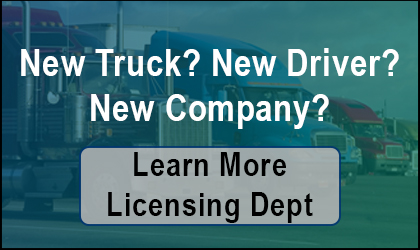
What the 2019 ELD Full Compliance Deadline means for AOBRD and Back-Office ELD Management
posted in Alerts by Brian Gray
What the 2019 ELD Full Compliance Deadline means for AOBRD and Back-Office ELD Management
Today, about 3 million ELDs — and older electronic logging systems known as automatic onboard recording devices, or AOBRDs — are in service, according to Driscoll’s 2019-20 U.S. Mobile Resource Management Systems Market Study released in January. Of the 3 million ELDs and telematics systems that Driscoll estimated are in service, “probably close to half” are AOBRDs.
When the United States Congress mandated the use of electronic logging devices (ELD), trucks with existing automatic on-board recording devices (AOBRDs) were grandfathered in for two years. That two-year extension will be expiring on December 16, 2019, at which time all commercial vehicle drivers who are required to prepare Hours of Service records of duty status (RODS) will have to do so using an ELD.
The Difference Between AOBRDs and ELDs
An AOBRD, or automatic on-board recording device, is an electronic device that records a driver’s Hours of Service (HOS) as laid out in the U.S. Hours of Service of Drivers Regulations Section § 395.15 by the Federal Motor Carrier Safety Administration (FMCSA).
All AOBRDs met the standards outlined in 49 CFR 395.15 and operated with the following features at all times:
- Integrally synchronized with the operations of the commercial motor vehicle in which it is installed
- Record engine use
- Record road speed
- Record miles driven
- Record date and time of day
ELDs also have a number of important advancements:
- Internal synchronization is more clearly defined in ELDs.
- Records location information about the truck at each duty cycle change, plus every 60 minutes while the vehicle is in motion.
- Provides a graph grid of the driver’s duty status changes.
- Warns driver of unassigned driver time/miles upon login.
- Defaults to on-duty not driving status when the vehicle has stopped for five consecutive minutes and there is no driver response to prompt the ELD.
- Synchronizes to Universal Coordinated Time.
- Enhanced resistance to tampering.
The Good News with Geotab Cloud ELD
 ELDs offer many benefits, the biggest being access to real-time data. Other key benefits include the ability to monitor fuel usage and manage driver safety, improve Hours of Service performance, and track arrival and departure times.
ELDs offer many benefits, the biggest being access to real-time data. Other key benefits include the ability to monitor fuel usage and manage driver safety, improve Hours of Service performance, and track arrival and departure times.
The Geotab Cloud ELD platform interconnects the Geotab GO telematics device with a mobile device running the Geotab Drive app (available for Android and iOS) through a secured cloud-based server operating the MyGeotab fleet management software. Unlike hard-wired or Bluetooth paired solutions that use a time-based approach with periodic status checks, the GO device continuously records and transmits data to the cloud-based program to effectively monitor and record HOS, including RODS and Driver Vehicle Inspection Reports (DVIRs).
Geotab has registered its Geotab Cloud ELD with FMCSA indicating that it meets the necessary specifications.
Learn more about the Geotab ELD here.
Transitioning to ELD Training Tips
Like any technology solution there will be a learning curve with ELDs. Fleets need to take action today to get a transition process in place and devise a training program for drivers and office staff to ensure the smoothest transition possible.
The top areas to focus on during training are:
- Making sure drivers understand the thresholds for automatic duty status
- Teaching them how to successfully transfer data from the ELD to the law enforcement official via either the telematics or local transfer method
- Explaining the various ways the ELD can malfunction. FMCSA has information on both the types of malfunctions and what drivers need to do in the event of a malfunction.2 Educate your back office staff about their responsibilities when malfunctions are reported by drivers.
- Ensuring drivers understand how to edit logs and are aware that they must approve all edits made by supervisors.
Take a step-by-step approach when transitioning from AOBRDs to ELDs. Make sure the plan covers what needs to be done prior to deploying the ELDs, driver training and training for back office staff.
Giving drivers and ELD administrators ample time to learn and ask questions will result in the smoothest transition. Once the fleet has begun the transition from AOBRDs to ELDs, schedule ongoing training sessions with drivers and offer coaching where needed.
Focus Now Turns to Fleet ELD Management
Now that all companies have, or will have, ELDs, some fleets are asking what else they can do with that platform.
A fleet’s back-office to manage electronic logging devices (ELDs) have been given an opportunity to better manage their vehicles and drivers when it comes to audits, violations, maintenance, and more.
Telematics vendors said the features and services they have added or will be adding include onboard cameras for video capabilities; more computing prowess for analytics; and deeper engagement with fleet customers to help them get more out of their systems.
Be sure to keep an eye on the most common issues in the back-office ELD Management:
- Logs Must Be Audited By The Carrier
- Monitor Drivers For Violations
- Timing For Audits Is A Concern
- Monitor All Unassigned Drive Time Logs
- Pay Attention To Odometer Skips Or Jumps
- Establish Rules For Personal Conveyance In Your Fleet Policy
Read the article for details on the major ELD Management Mistakes.






